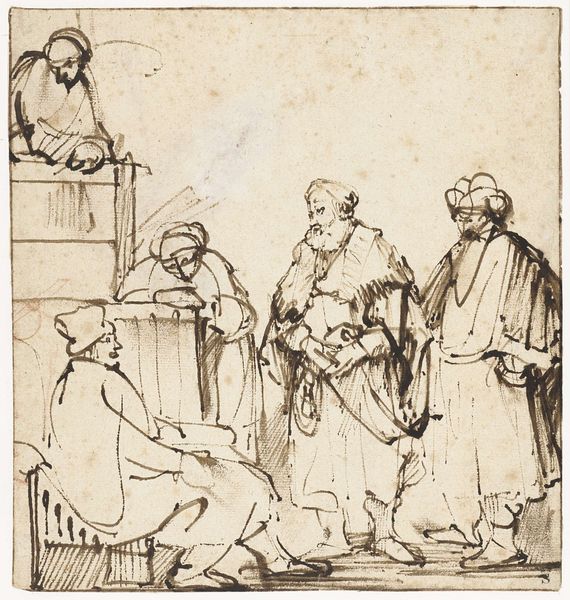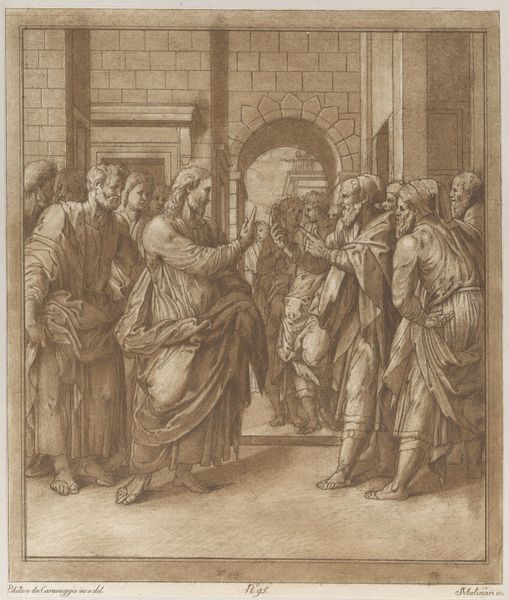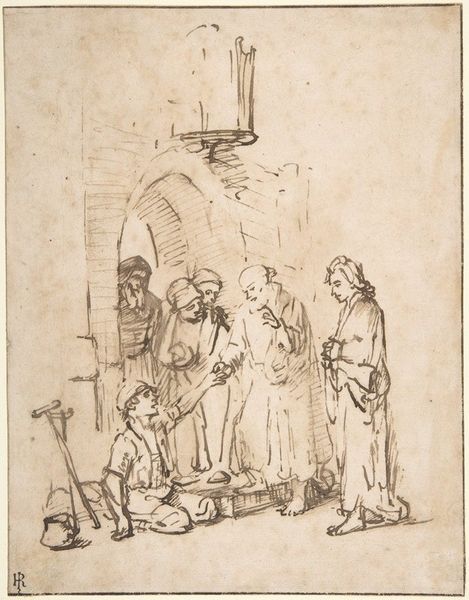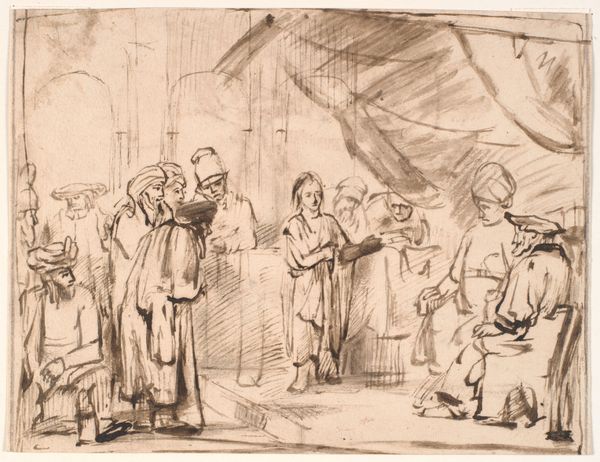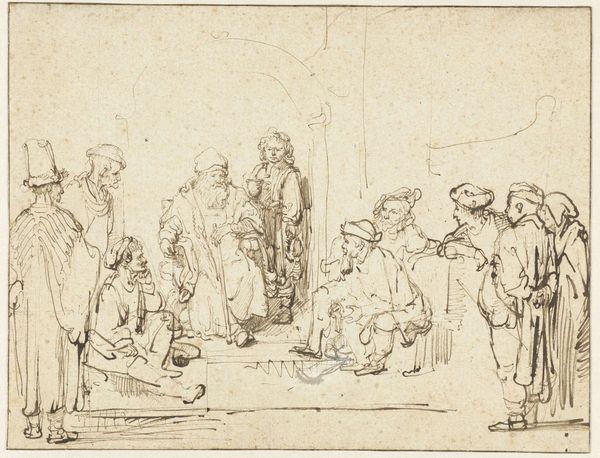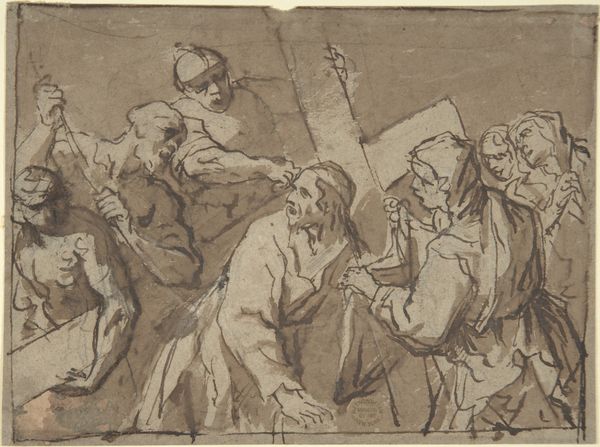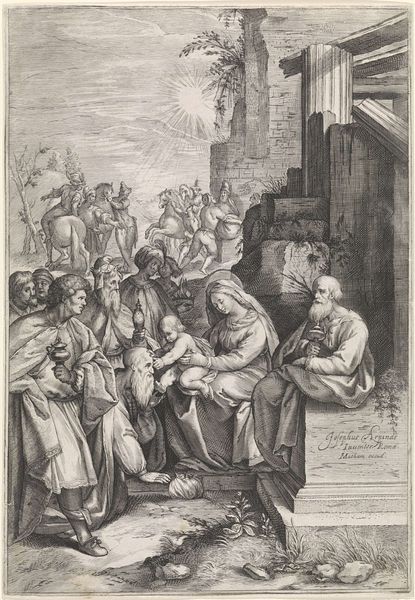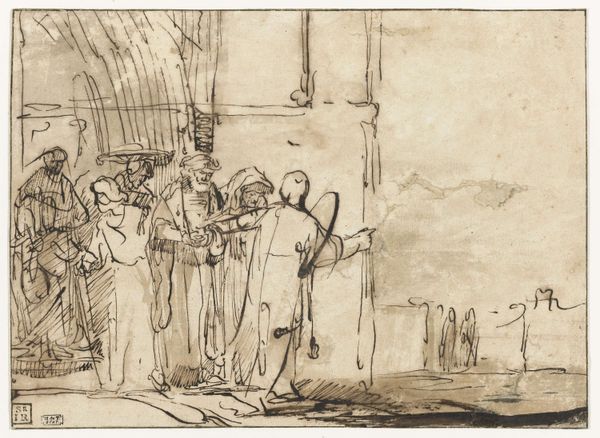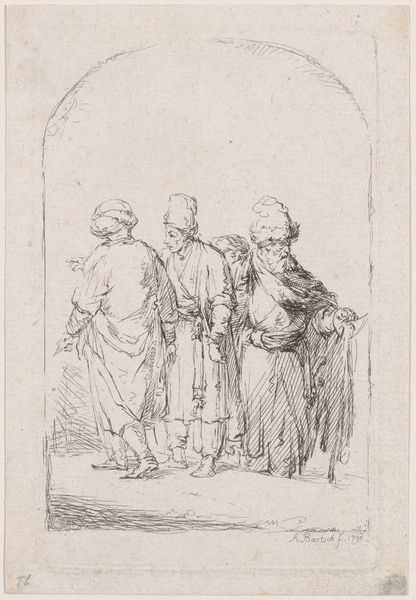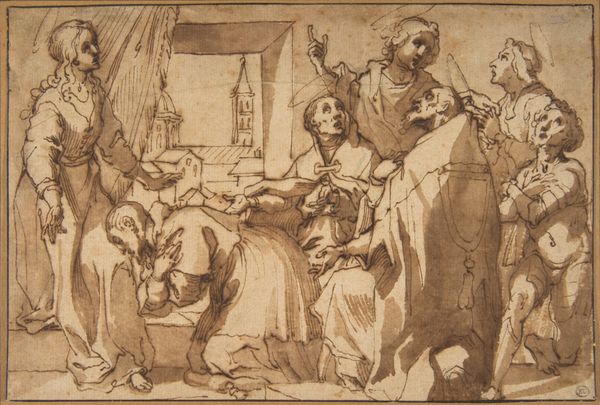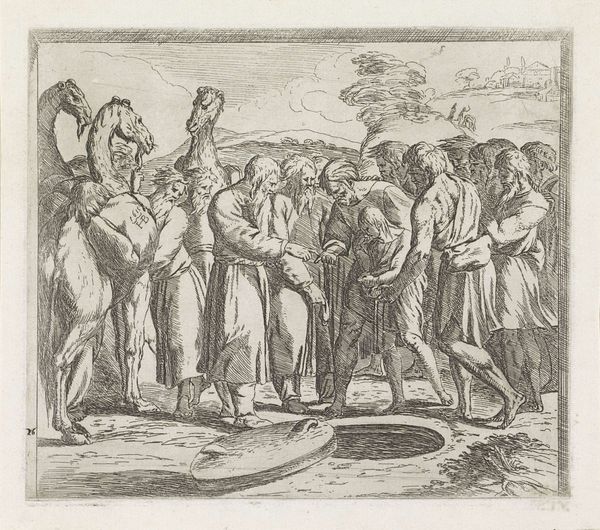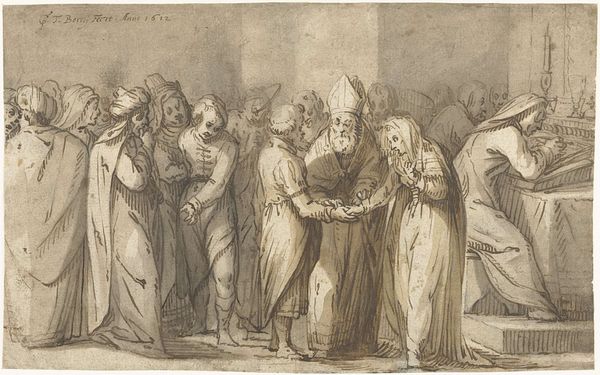
drawing, paper, ink
#
drawing
#
toned paper
#
light pencil work
#
narrative-art
#
baroque
#
pen sketch
#
pencil sketch
#
figuration
#
paper
#
personal sketchbook
#
ink
#
ink drawing experimentation
#
pen-ink sketch
#
pen work
#
sketchbook drawing
#
history-painting
#
sketchbook art
#
christ
Dimensions: height 102 mm, width 101 mm
Copyright: Rijks Museum: Open Domain
Editor: We’re looking at Nicolas Poussin’s "Study for the Ordination of the Apostles," created between 1642 and 1644. It's an ink drawing on paper, and there's something quite immediate about it. It feels like we're seeing a very private moment of artistic exploration. What jumps out at you when you look at this? Curator: Well, considering Poussin's status as a prominent artist of his time, especially within the French academy and court circles, this sketch provides a fascinating glimpse behind the scenes. This type of history painting served the socio-political function of reinforcing religious authority. But in its preparation, there were alternative avenues for artists. I wonder how Poussin thought about his role, and how the medium here—this pen-and-ink study—enabled exploration away from the public gaze. Editor: That’s interesting! So, it’s not just about the religious narrative, but about Poussin navigating his role in society? Curator: Precisely. Consider also the art market: drawings weren't always valued the same way paintings were. This allowed for less formal, less controlled experimentation. Was Poussin thinking about patronage, or about satisfying his own artistic curiosities here? These sketches often reveal artists’ true styles, not their public faces. Editor: So it becomes almost like a window into his artistic process. What did the act of drawing enable him to explore that the finished painting might not? Curator: Speed and flexibility, certainly. Drawing allowed Poussin to rapidly iterate on compositions, figure arrangements, and emotional expressions. I'd say it shows art-making less as declaration and more as negotiation of ideas between the artist and his material. Editor: That's a perspective I hadn't considered before! Seeing it as a negotiation rather than a statement completely reframes my understanding. Curator: It underscores the importance of looking at art's institutional history and reception – what social roles was it meant to play, and who controlled those roles? And how artists could push the boundaries of such controls! Editor: Thanks for the insight; I will not see such works in the same way now.
Comments
No comments
Be the first to comment and join the conversation on the ultimate creative platform.
